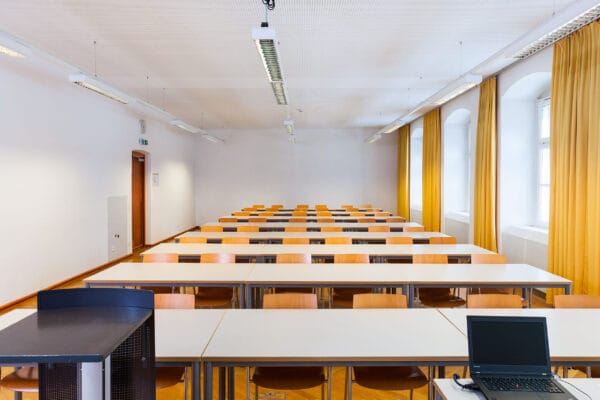
NAME:
Theologie – SR VI
BUILDING:
Theologie
FLOOR:
1
TYPE:
Seminar Room
CAPACITY:
48
ACCESS:
Only Participants
EQUIPMENT:
Beamer, PC, WLAN (Eduroam), Overhead, Flipchart, Blackboard, Handicapped Accessible, LAN, Speaker Desk
I am a master’s student in the Regional Development program at the Regional University of Blumenau and a researcher in the project Scalar Challenges of Water Governance in Hydrosocial Territories of Brazil in the Context of Climate Change: A Comparative Study with Mexico, Portugal, and England. The Itajaí Valley, located in the state of Santa Catarina, Brazil, is home to a population of 2,096,406 and features a geography marked by river valleys and hillside areas, where urban and rural settlements intertwine. The region’s economy is driven by industrial production and agricultural activities, attracting both internal and external migration flows. Cities such as Blumenau, Brusque, and Itajaí have a historical record of receiving migrants, both internal—mainly from northeastern Brazil—and external, with significant contingents of Haitian, Venezuelan, and Senegalese migrants. Hillside areas and rural peripheries of these cities have been increasingly occupied by migrant populations living in vulnerable conditions. According to the 2022 Census, 2.68% of Blumenau’s population lived in rural areas, while this percentage was 1.73% in Brusque and 3.20% in Itajaí (IBGE, Demographic Census, 2022). These communities often reside in risk-prone areas, exposed to floods and landslides. Between 2000 and 2023, the Itajaí Valley recorded more than 281 floods, affecting approximately 207,000 people and leaving 21,600 homeless. In the same period, 146 landslides occurred in the state, impacting 245,354 people and displacing 2,417 (Ministry of Regional Development, Digital Atlas, 2000-2023). In 2022 alone, floods and landslides affected 55,000 people in Blumenau, 35,000 in Brusque, and 179,000 in Itajaí. This research investigates how migrant communities in the Itajaí Valley experience these extreme climate events, analyzing their socioeconomic vulnerabilities and adaptation strategies. Preliminary results indicate that while informal support networks and community initiatives play a crucial role in building resilience, government policies often fail to address migrants’ needs in disaster response frameworks. Thus, this study contributes to a broader understanding of migration, disaster resilience, and regional development in territories vulnerable to climate change, drawing parallels with rural and mountainous areas in Europe and the Global South.
